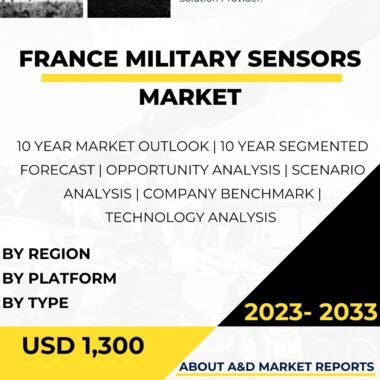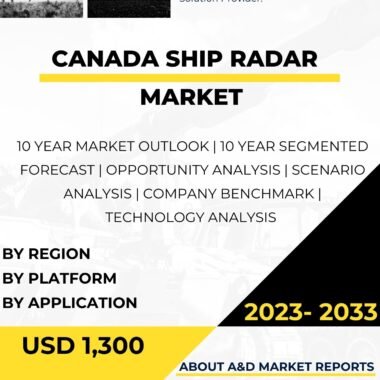Description
The China ship radar market has witnessed significant growth and development in recent years. With China’s focus on maritime security, naval modernization, and commercial shipping, there has been a substantial demand for advanced ship radar systems. This market analysis provides an overview of the China ship radar market, including key players, market drivers, challenges, and future prospects.
The China ship radar market is characterized by the presence of both domestic and international players. Domestic companies, such as CETC (China Electronics Technology Group Corporation), Norinco Group, and China State Shipbuilding Corporation (CSSC), have made significant contributions to the development, production, and supply of ship radar systems. These companies have invested in research and development to enhance the capabilities of their radar systems and meet the specific requirements of the Chinese Navy and commercial shipping industry.
International players, including renowned radar manufacturers such as Thales Group, Raytheon Technologies Corporation, and Hensoldt AG, have also established collaborations and partnerships in China. These partnerships have facilitated technology transfer, knowledge exchange, and joint development programs, contributing to the advancement of ship radar capabilities in China.
The market is driven by several factors. One of the primary drivers is China’s focus on maritime security and naval modernization. Ship radar systems play a crucial role in maritime surveillance, target detection, tracking, and navigation. As China seeks to strengthen its maritime capabilities, protect its territorial waters, and ensure maritime safety, the demand for advanced ship radar systems has grown.
Furthermore, the rapid growth of China’s commercial shipping industry has fueled the demand for ship radar systems. Radar systems are essential for vessel navigation, collision avoidance, and safe maneuvering in congested waterways. As China’s trade and maritime transportation activities expand, the need for reliable and accurate ship radar systems has increased.
Technological advancements have played a crucial role in the growth of the China ship radar market. Domestic companies have focused on developing indigenous ship radar systems with improved range, accuracy, resolution, and target discrimination capabilities. China has made significant progress in the development of various ship radar systems, including surface search radars, navigation radars, and fire control radars.
China has successfully developed and deployed advanced ship radar systems, such as the Type 364 and Type 366 surface search radars, which provide long-range surveillance and target tracking capabilities for naval vessels. The development of multifunction radar systems, such as the Type 346, has enhanced China’s naval capabilities by providing simultaneous air and surface surveillance, target tracking, and fire control capabilities. Additionally, high-resolution navigation radars, such as the Type 992, have been developed to support safe and efficient vessel navigation.
Another driver of the China ship radar market is the export market. China has emerged as a significant exporter of ship radar systems, offering cost-effective solutions to countries seeking to enhance their maritime security and commercial shipping capabilities. The Belt and Road Initiative (BRI) has provided opportunities for China to export its ship radar systems to partner countries, expanding its market presence globally.
However, the China ship radar market also faces certain challenges. One of the primary challenges is the need for continuous research and development to keep pace with evolving maritime threats and emerging technologies. As adversaries develop more advanced electronic warfare capabilities and seek to disrupt ship radar systems, China must invest in innovation and advanced technologies to maintain its technological edge.
Additionally, the market faces challenges related to international export restrictions and intellectual property rights. The development and export of ship radar systems are subject to strict regulations due to security concerns. This can limit market opportunities and hinder collaboration with international partners.
Looking ahead, the future prospects for the China ship radar market are promising. China’s commitment to maritime security, naval modernization, and commercial shipping will continue to drive investments in ship radar systems. Ongoing research and development efforts, collaborations between domestic companies and international partners, and the integration of emerging technologies, such as digital beamforming and advanced signal processing, are expected to result in the introduction of more advanced and capable ship radar systems.
The integration of advanced signal processing and digital beamforming technologies may shape the future of the market. These technologies enable improved radar performance, including higher resolution, enhanced target discrimination, and reduced interference. The use of machine learning and artificial intelligence algorithms can further enhance radar capabilities by enabling automated target detection, classification, and threat assessment.
In conclusion, the China ship radar market has witnessed significant growth driven by the country’s focus on maritime security, naval modernization, and commercial shipping. Technological advancements, collaborations between domestic and international players, and the government’s commitment to indigenous defense capabilities have contributed to the development and deployment of advanced ship radar systems. Challenges related to evolving maritime threats, export restrictions, and intellectual property rights need to be addressed. With ongoing research and development, collaborations, and the integration of emerging technologies, the future of the China ship radar market looks promising, with opportunities for further growth, innovation, and advancements in ship radar capabilities.




